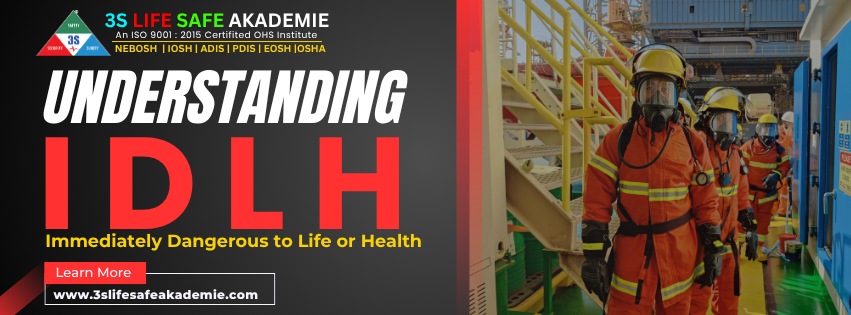
Posted by:- Sushant Mishra
23-07-2025
In the field of occupational health and safety, one term carries significant weight when it comes to protecting lives in hazardous environments: IDLH, which stands for Immediately Dangerous to Life or Health. Understanding what IDLH means, where it applies, and how to respond to such situations is crucial for safety professionals, especially those working in confined spaces, chemical industries, oil & gas, and emergency response.
IDLH is a designation defined by the National Institute for Occupational Safety and Health (NIOSH) and used by OSHA. It refers to any atmospheric condition that poses an immediate threat to life, would cause irreversible or delayed adverse health effects, or would interfere with an individual's ability to escape from a dangerous environment.
"An IDLH atmosphere is one that is likely to cause death or immediate or delayed permanent adverse health effects or prevent escape from such an environment."
In simple terms, if an environment is IDLH, it is too dangerous to enter without proper protection and preparation. These environments can cause death, irreversible health effects, or prevent escape within 30 minutes.
IDLH situations are commonly encountered in:
IDLH conditions can also occur unexpectedly due to equipment failure, human error, or unplanned chemical reactions. That's why continuous monitoring and emergency readiness are essential.
NIOSH and OSHA establish IDLH values based on:
These values are reviewed and published by NIOSH and are critical for determining safe working conditions.
| Substance | IDLH Value |
|---|---|
| Phosgene | 2 ppm |
| Chlorine | 10 ppm |
| Nitrogen Dioxide (No2) | 20 ppm |
| Formaldehyde | 20 ppm |
| Hydrogen Sulphide (H2S) | 100 ppm |
| Sulphur Dioxide (SO2) | 100 ppm |
| Ammonia | 300 ppm |
| Carbon Monoxide (CO) | 1200 ppm |
| Oxygen | <19.5% or >23.5% |
| Methane | Explosive at 5%+ |
Understanding IDLH is essential for:
When workers and safety officers are trained to identify and respond to IDLH conditions, they significantly reduce the risk of accidents and fatalities.
When it comes to IDLH environments, every second counts. Always monitor, assess, and wear the right protection.
Understanding IDLH is not just a technical requirement; it's a life-saving necessity. From hazard identification to emergency planning, every safety professional must be prepared to deal with these environments.
If you're preparing for certifications like NEBOSH, OSHA, or IOSH, or managing industrial safety, make sure you grasp IDLH concepts thoroughly.